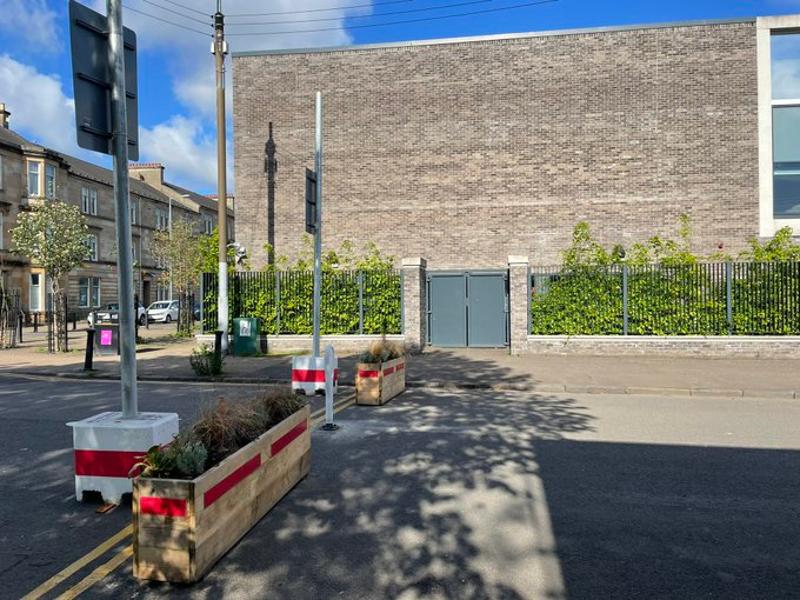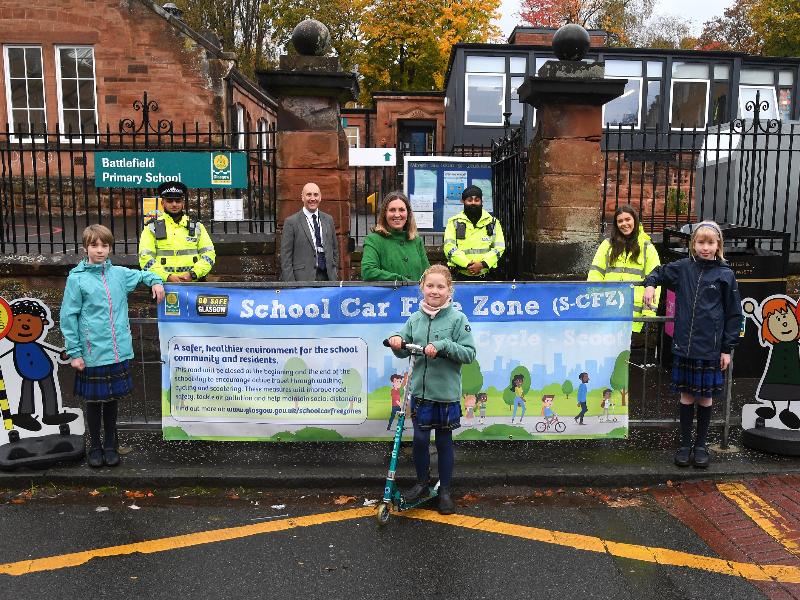- Glasgow City Council
- > News Archive
- > News Archive 2022
- > Glasgow's Making Spaces for People - Progress Update (Spring 2023)
Glasgow's Making Spaces for People - Progress Update (Spring 2023)
Overview
Introduced at the start of COVID-19 to suppress the spread of the virus and help manage demand on public transport, Glasgow's Spaces for People programme has delivered a significant number of temporary travel interventions across the city to ease physical distancing in public places, mainly through the provision of widened footways, road closures and segregated cycle lanes.
The majority of Spaces for People schemes are now either permanent or are in the process of becoming permanent. This follows an independent review which highlighted that the infrastructure can offer long-term active travel and sustainability benefits.

Spaces for People in Glasgow has been supported by funding from the Scottish Government which is administered by Sustrans Scotland.
Susrans Scotland published an evaluation report in September 2022 about the Spaces for People programme. You can read the report here.
What We've Delivered
City Centre:
A significant amount of road space was initially reallocated in the city centre for walking and wheeling.
Following a period of monitoring and review, some measures were removed to allow a focus on the delivery of temporary infrastructure where it was most needed and to improve its look and feel. Larger style planters and trees were subsequently installed around George Square to green the space as well as restrict vehicle movement.
Complementary work was also undertaken around St Vincent Place, Queen Street and Merchant City.
.jpg)
Temporary footway widening remained in situ around our main transport hubs and busier bus stops.
Details of all measures introduced in our city centre through Spaces for People can be found here.
Neighbourhoods:
This element of the programme created additional pedestrian space within many of our communities, and was primarily made possible through the removal of kerbside parking.
Footways were widened at Easterhouse, Cardonald, Tollcross, Parkhead, Cessnock, Shawlands, Bridgeton, Partick (Dumbarton Rd), Finnieston and Byres Road, with some measures adjusted and/or removed following a period of monitoring and review.
We also assisted schools, with extra pavement space created outside Lourdes Primary School and Shawlands Primary School to ease congestion at school drop off/pick up time.
Changes were also made to the road layout on Kelvin Way to balance the provision of extra space for walkers, wheelers and cyclists whilst enabling vehicular access into the Kelvingrove Art Gallery and Museum.
.jpg)
Details of all measures that were introduced across our neighbourhoods can be found here.
People Friendly Streets:
Schemes to create 'People Friendly Streets' were delivered at Shawlands, Dennistoun and Pollokshields, with the aim of creating calmer neighbourhoods that have additional space for walking, wheeling and cycling.

School Streets:
Spaces for People helped to expand the number of 'School Streets' which prohibit vehicles from driving up to the school gates at peak times, leaving extra space for walking, wheeling and cycling.

Pop-Up Cycle Lanes:
Segregated cycle lanes were introduced to encourage active travel for everyday journeys and to help reduce demand on public transport.
Lanes were installed on the Broomielaw, Dumbreck Road, London Road (Phase 1 and Phase 2), Great Western Road (Duntreath Avenue to Lincoln Avenue), Gorbals Street, Cumbernauld Road, Provanmill Road, Bilsland Drive, Hawthorn Street, Brockburn Road, Braidcraft Road, Cambridge Street and Royston Road.
We also made mandatory, existing cycle lanes on Corkerhill Road, Clarence Drive, Wallacewell Road and Howard Street and added soft segregation.
Other related initiatives include the provision of cycle parking at 50 new locations, such as in George Square and an expansion of Glasgow's popular cycle hire scheme operated by nextbike.
Full details of all the cycle lanes introduced through the Spaces for People programme can be found here.
Improved Access to Parks and Open Space:
We increased signage within our parks and provided wayfinding on routes to help ease physical distancing, along with vegetation clearance to remove obstructions on public footways.
Increased Pedestrian Priority at Junctions:
An early Spaces for People intervention eliminated the need for pedestrians to use push buttons at crossings to reduce the risk of spreading the virus. This popular measure which is now in operation at over 50 sets of lights is being rolled out more widely throughout the city.
Touch-free crossing technology has also been introduced at selected locations.
Making Measures Permanent
Whilst initially installed to ease physical distancing during the pandemic, it was acknowledged that the measures could contribute to the prioritisation of sustainable transport across the city. An independent review was therefore commissioned to look at whether to retain or remove measures - the findings of which were accepted by the council's City Administration Committee on 16 September 2021.
Key report recommendations included:
- The permanent retention of all Spaces for People segregated cycle lanes which offer around 40km of additional dedicated cycling space
- To keep footway widening measures and urban greening around George Square and Merchant City, as well as infrastructure that supports physical distancing around city centre transport hubs and bus stops
- That the 'People Friendly Streets' measures at Dennistoun, Shawlands and Pollokshields East should be made permanent
- The removal of all footway widening measures within city neighbourhoods, except for the road closure and associated infrastructure on Kelvin Way
In undertaking the analysis, cycle count data was considered, as was the outcomes of a consultation which received 3,749 responses and showed a 'strong skew' towards the retention of all measures. There was also an assessment of how interventions ally with existing active travel and sustainability goals.
Future schemes not yet delivered which are expected to support similar strategic aims were also factored into the independent assessment, alongside a consideration of our core paths network.
Accessibility
Every effort has been made to ensure the needs of disabled people are fully considered in the planning and delivery of Spaces for People measures, and the project team has endeavoured to ensure that these reflect the considerations identified in the briefing paper issued by the Mobility and Access Committee for Scotland (MACS) as well as taking existing guidance into account in their design.





